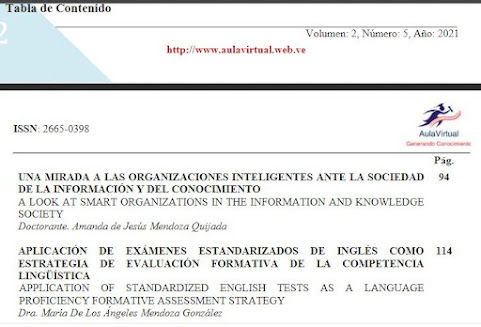Input and interaction: Tips to improve your students’ SLA
By Ma. De Los Angeles Mendoza González
We know that teaching can be a kind of hard, there
are many elements involved in the Second Language Acquisition (SLA) process.
Don´t worry, in this paper, you will find some advice to help you improve your
students’ SLA based on input and interaction.
Input and interaction
Very well, but… What is input? Input is
any oral or written content that the students are exposed to according to their learning level. The input can be varied according to the students´
needs and the objectives of the lesson plan.
The
interaction is the result of the input, there is always an interaction between the
teacher and the student, but also the students
must interact with their classmates and with other people in the classroom or
outside.
Here
are some tips to improve your student´s performance:
- ·
The input must be planned according to the students’ level. The input needs to generate interaction
- · The input can be obtained from pedagogic and authentic materials and
books.
- ·
The input involves the teacher talk, foreign talk, and interlanguage
talk, which is the one that the student generates when learning.
Some
of the inputs, you can use to have your students interested in your class and
promote the interaction.
- a) Playing card games. These games can be played
individually, in pairs or groups, in the physical or online way and are very useful
to help students learn and remember vocabulary, verbs, adjectives, adverbs and
more.
- b) Sketches. Give your students cards with some
instructions and let them organize, assign roles, write the dialogues, and
perform.
- c)
Interview. The students make teams and write questions, then they record
the interview. Also, the students can pretend they are some famous people, and
their classmates can ask questions and interact funnily.
- d) Send messages. Ask the students to record messages and
send them to their classmates, then the students who received the message must
do or answer the activity or question he/she understood.
- e) Watch/listen to a short video or song, then make
teams and ask students to recreate some scenes or sing the song with their own
words.
- f) Real situations. Make teams. Then, give the
students a situation in a specific context. Then, tell them to participate with
their classmates to solve the problem or give ideas about how to act in the
situation (for example, going to the bank, going shopping, trying clothes,
cooking, etc.)
Remember that the input must be necessary
and sufficient for L2 acquisition. It is important that the input can be
comprehensible so the students can communicate and socialize. Also, the input must be presented according to each group of students'
levels and monitors the activity and the student's participation to give
feedback and motivate them to acquire the language in an effective way.
References
Hockly, N., De Prada, E. (2020) Chapter 3 Input, interaction, and context. IEXPRO University. Class Anthology.
. Retrieved in
Chromeextension://oemmndcbldboiebfnladdacbdfmadadm/https://selmaestriasvirtual2.universidadiexpro.mx/pluginfile.php/25813/mod_assign/introattacment/0/Chapter%201.%20Interlanguage.pdf?forcedownload
Maharsi, I. (2011) The importance of input and
interaction in second language acquisition. Journal of English and
Education, Vol 5 No. 1
Retrieved in httpps://oemmndcbldboiebfnladdacbdfmadadm/https://journal.uii.ac.id/JEE/article/download/4459/3941
Pixabay (2021) Free
pictures
Retrieved in https://pixabay.com/es/






















